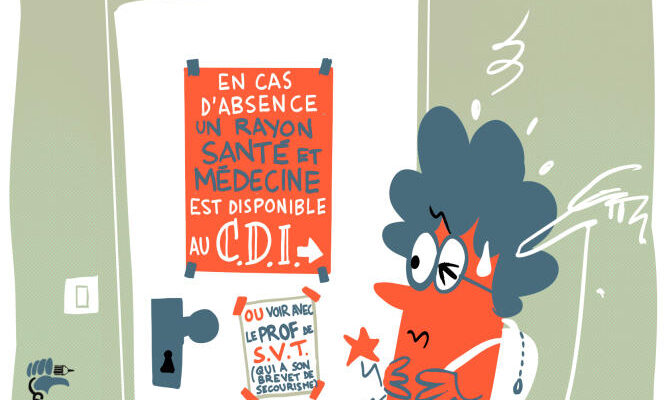“School health is collapsing! », insists Gwenaëlle Durand, general secretary of Snies-UNSA, one of the two unions of school nurses. This organization calls, with the Snics-FSU, for a white march, Tuesday, May 23, to “save health at school”. The two unions are asking in particular for the creation of 15,000 jobs, a salary increase, and specific training sanctioned by a master’s degree.
“It is time for our demands to be taken into account, otherwise we will find ourselves in a catastrophic situation”is alarmed Gwenaëlle Durand.
A system not up to scratch: such was also the tone of the information report of the finance committee on “school medicine and health at school”, presented on May 10 before the National Assembly by the deputy (Rebirth) of Essonne Robin Reda. This document highlights “growing needs” – with the rise of the inclusive school, which requires an individualization of school paths, the health crisis and the increasing malaise of students – and the difficulty of the school health system to respond to it, due to ‘A “lack of staff”.
Geographic disparities
In ten years, the number of school doctors has fallen by 20%. In 2023, there would be approximately 900 school doctors for 60,000 establishments and more than twelve million pupils. “For several years, the performance of the competition fluctuates between 30% and 50%”, for lack of sufficient candidates, advances the Ministry of National Education. The number of nurses remains stable with around 7,700 nurses, but the performance rate in the competition, which stood at 100% in 2018, has deteriorated. In 2022, he missed fifty-eight candidates admitted to the competition for 395 positions offered, notes the report.
Significant disparities exist between territories. “The map of the shortage of school doctors intersects with that of medical deserts and adds to the crisis of attractiveness in the broad sense of national education”, details Robin Reda. The report cites the figures of the Court of Auditors, which established, in 2018, that the average number of students per full-time equivalent (FTE) of national education doctor in each department was between 6,464 students per doctor in the Lot and 99,370 students per doctor in the Dordogne. For nurses, the Court of Auditors had noted a number of students per FTE ranging from 680 in Cantal to more than 2,000 in Mayotte. At the national level, the averages would be 12,800 students per doctor and 1,303 students per nurse.
You have 66.83% of this article left to read. The following is for subscribers only.
